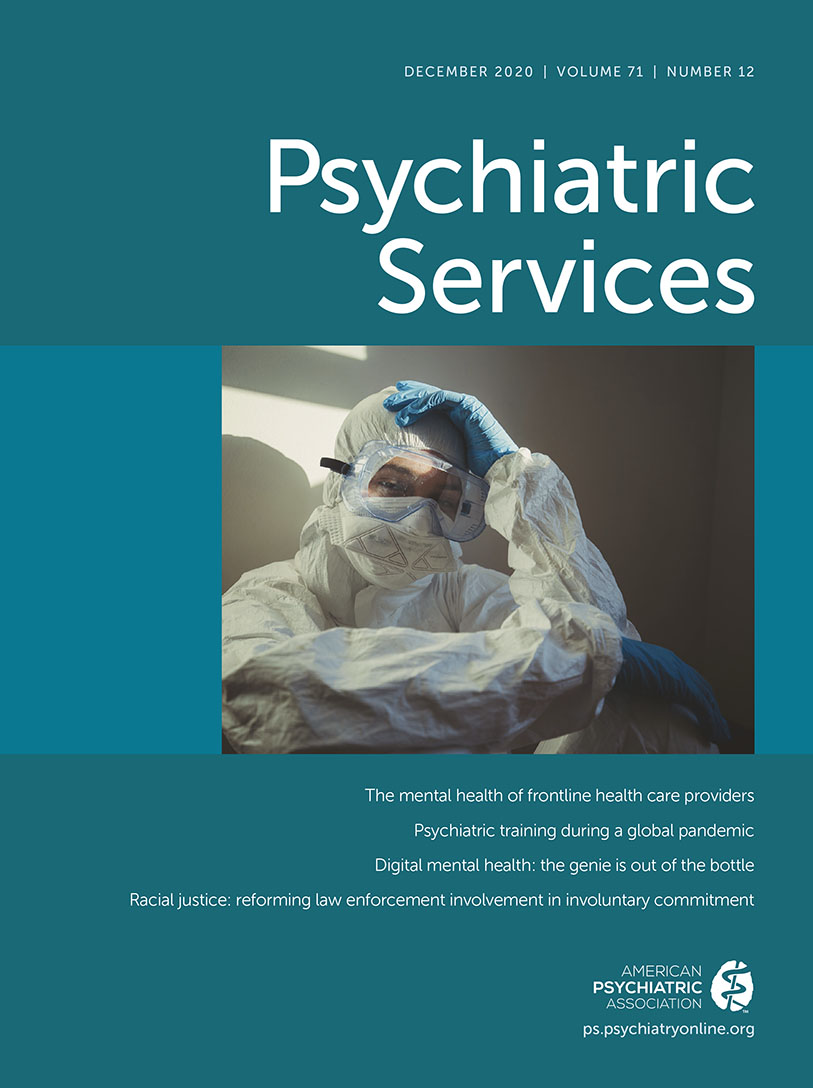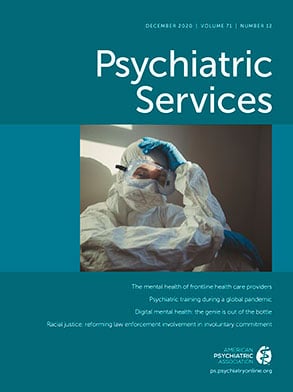COVID-19 arrived in the United States while the nation faces profound challenges in responding to the opioid crisis. The public health response to COVID-19 has been extensive and, rightfully, took immediate priority over other ongoing health emergencies. However, physical distancing to decrease the spread of the disease may exacerbate the risk for overdose death by increasing drug use in isolation and reducing access to harm reduction and treatment services. New policies and practices are currently being devised and implemented to mitigate these undesirable consequences. These efforts provide opportunities to test and implement more flexible and innovative approaches to opioid use disorder treatment and overdose prevention. The approaches, many of which are not new but have never before been adopted on a wide scale in the United States, have the potential to substantially improve our response to the opioid crisis if sustained when the threat of the COVID-19 pandemic recedes.
Harm reduction services such as distribution of sterile syringes, opioid overdose–reversing drugs (i.e., naloxone), and HIV/hepatitis C virus testing have formed the backbone of the public health response to the overdose crisis. As syringe service programs are shut down and face-to-face services are reduced because of the COVID-19 pandemic, community pharmacies have the opportunity to step in as providers of these essential services. Pharmacy distributions of naloxone and of sterile syringes very effectively reduce overdose mortality (
1). Most states now have legislation that allows pharmacists to prescribe naloxone or to dispense it without a prescription or that permits pharmacies to dispense it via a standing order to patients who meet certain criteria. These pharmacy services are crucial during the COVID-19 pandemic when outpatient services are substantially curtailed. Moreover, 31 states grant pharmacists the authority to order and interpret laboratory tests. However, individuals who seek these services from community pharmacies often face stigma, and many pharmacies do not carry these supplies or provide these services, even if permitted by law. Other options include using mail order and mobile sites to distribute these life-saving supplies and relaxing one-for-one syringe exchange rules to reduce the need for frequent pharmacy visits and facilitate secondary exchange. Adoption and availability of these approaches need to be substantially ramped up to fully realize their promise.
Harm reduction has traditionally emphasized the importance of avoiding drug use in isolation to reduce the likelihood of death after an overdose. How should these messages be adjusted during the COVID-19 pandemic, when physical distancing is being urged? Innovations such as using social media and telephone check-ins (e.g., by a peer specialist) to maintain contact with individuals while they are using drugs could help protect people who use drugs alone.
Because of the COVID-19 pandemic, patients are suddenly experiencing disrupted access to outpatient treatment for substance use disorders, including evidence-based medications for opioid use disorder; such disruptions increase risks for relapse and overdose. Among patients receiving any of the three U.S. Food and Drug Administration–approved medications for opioid use disorders—methadone, buprenorphine, and naltrexone—those receiving methadone face the greatest peril after treatment disruption. Methadone maintenance treatment is provided only by federally certified opioid treatment programs (OTPs), often requiring frequent attendance. In 2017, almost 383,000 patients received methadone maintenance treatment from an OTP on any given day (
2); most of this treatment was dispensed on site daily. Before the COVID-19 pandemic, OTPs could submit online applications to the Substance Abuse and Mental Health Services Administration (SAMHSA) to request exceptions for long-term, stable patients, enabling distribution of limited take-home supplies such as 2-day supplies that allow these patients to attend the OTP every other day. Such patient-by-patient exceptions were quickly rendered inadequate by the COVID-19 pandemic.
On March 16, 2020, SAMHSA issued guidance that allows states to request blanket exceptions for patients in OTPs to receive up to 14 or 28 days (depending on stability) of take-home doses of a patient’s medication (methadone or buprenorphine). This dramatic shift will bring the United States more in line with how methadone treatment has long been delivered elsewhere in the world (
3), making treatment less onerous for patients and potentially opening up greater treatment capacity if the changes are sustained after the COVID-19 pandemic has ended. A preliminary Internet search on April 7, 2020, indicated that 22 states had already issued guidance to OTPs to implement the exception, suggesting variation in state adoption.
Even in states that adopt such exceptions, implementation will be at the discretion of a given OTP. OTPs that heavily rely on cash payments, which are typically paid per on-site visit, or whose revenues are closely tied to the volume of on-site dispensing (e.g., as specified in contracts with state authorities or in reimbursement rules by public or private insurance) may be reluctant to implement these policies unless payment methods are changed. For example, New York State Medicaid has moved to adopting the Medicare weekly bundled payment codes and rates for take-home medication alone or bundled with telecounseling and medication management as an alternative to the fee-for-service payments for OTP services. Additionally, 91% of OTPs accept, and 10% rely exclusively on, cash payment, and clients may find it challenging to make the larger cash payments required for extended take-home doses.
Telemedicine can now be used by medical providers to initiate and maintain opioid use disorder treatment. Effective March 31, 2020, the U.S. Drug Enforcement Administration, in partnership with SAMHSA, permits authorized providers to use telemedicine (including by telephone) to conduct medical evaluations to start patients on buprenorphine during the COVID-19 emergency (
4), providing a much-needed exception to the in-person evaluation requirement implemented under the Ryan Haight Online Pharmacy Consumer Protection Act of 2008. However, in-person visits are still required for the initiation of methadone, in part because the first 2 weeks of methadone induction and dose changes have been associated with increased mortality. In New York City, a COVID-19 epicenter, the city-run hospital system has established a telemedicine buprenorphine induction clinic. The potential long-term benefits of sustaining this exception for stabilized patients may be especially helpful for those with an opioid use disorder who live in rural areas where they face substantial transportation barriers.
Early releases of jail inmates and prisoners have been advocated as a strategy to ease COVID-19 outbreaks and, if taken up on a large scale, could present an opportunity to expand access to opioid use disorder treatment in this population. The U.S. correctional system houses about 1.5 million prisoners and 700,000 jail inmates on any given day (
5). Close to two-thirds of this population meet clinical diagnostic criteria for substance use disorders, but fewer than a quarter of these inmates participate in a drug treatment program (
6). Initiation of medications for opioid use disorders has been growing rapidly in correctional settings in recent years but is far from widespread. For example, New Jersey has begun to introduce medications for opioid use disorders in every state prison and county jail. Furthermore, inmates can enroll in the Intensive Recovery Treatment Support Program to receive navigation services before and after their release to connect to community providers of medication-based treatment for opioid use disorder (
7). When devising policies to expedite decarceration in the current pandemic, policy makers should consider initiating pharmacotherapy before release from prison or jail.
Regulatory changes and innovative clinical practices to address the opioid crisis are continuing during the COVID-19 emergency. Many of these changes may potentially expand treatment of opioid use disorder, improve quality of care, and enhance the reach and effectiveness of overdose prevention, although some of these changes present risks if scaled up without rigorous evidence. For example, less intensive in-person contacts with OTPs might increase patients’ risk for dropping out of treatment. The natural experiments created by COVID-19 provide opportunities for evaluating adoption and outcomes of these regulatory and clinical changes to determine which ones are worth sustaining in the long run.
Acknowledgments
Philip Jeng, M.S., provided valuable assistance with research on state adoption of the Substance Abuse and Mental Health Services Administration blanket exception for opioid treatment programs.

